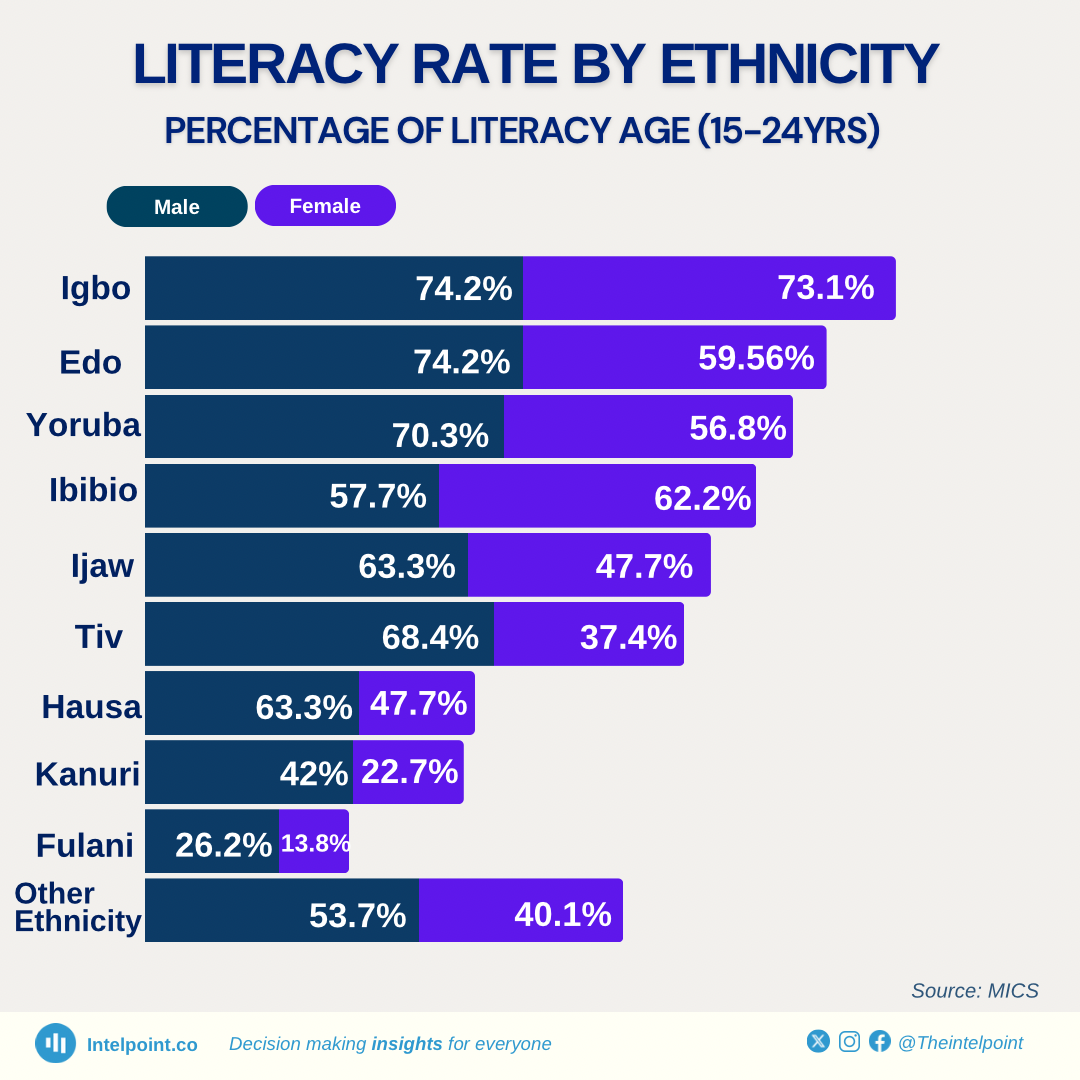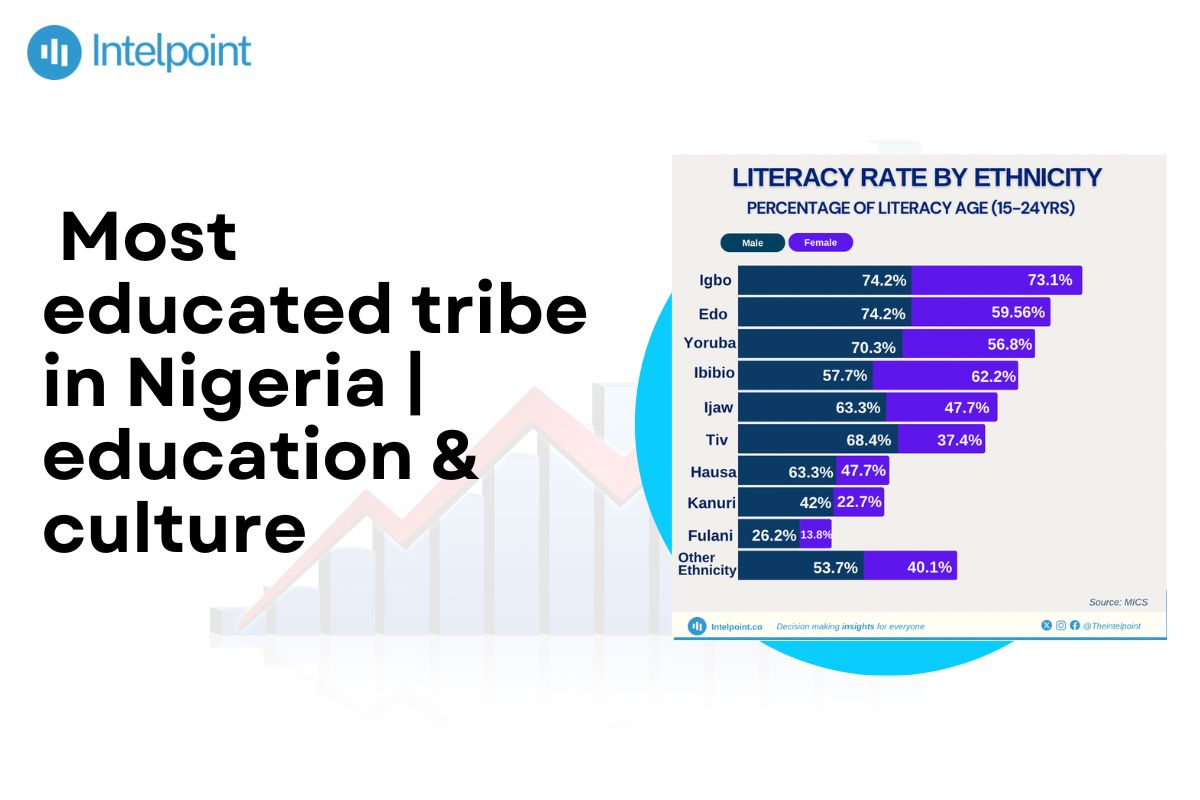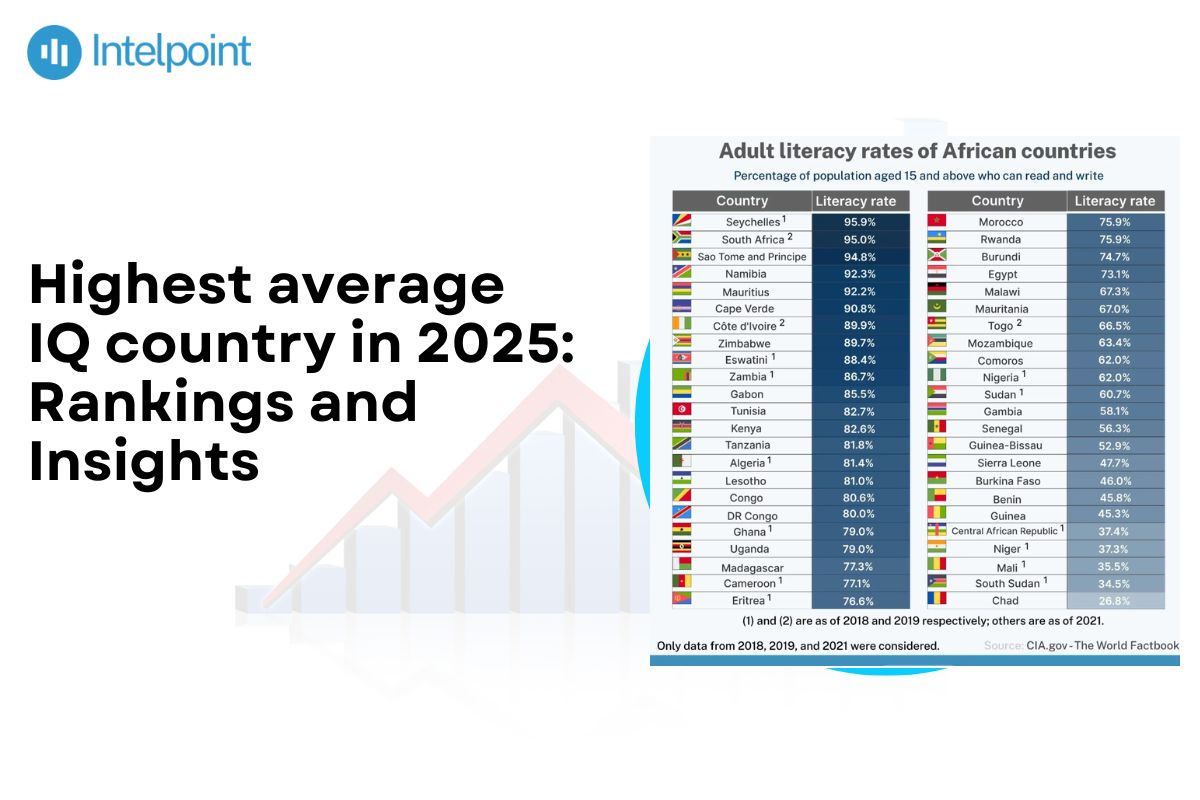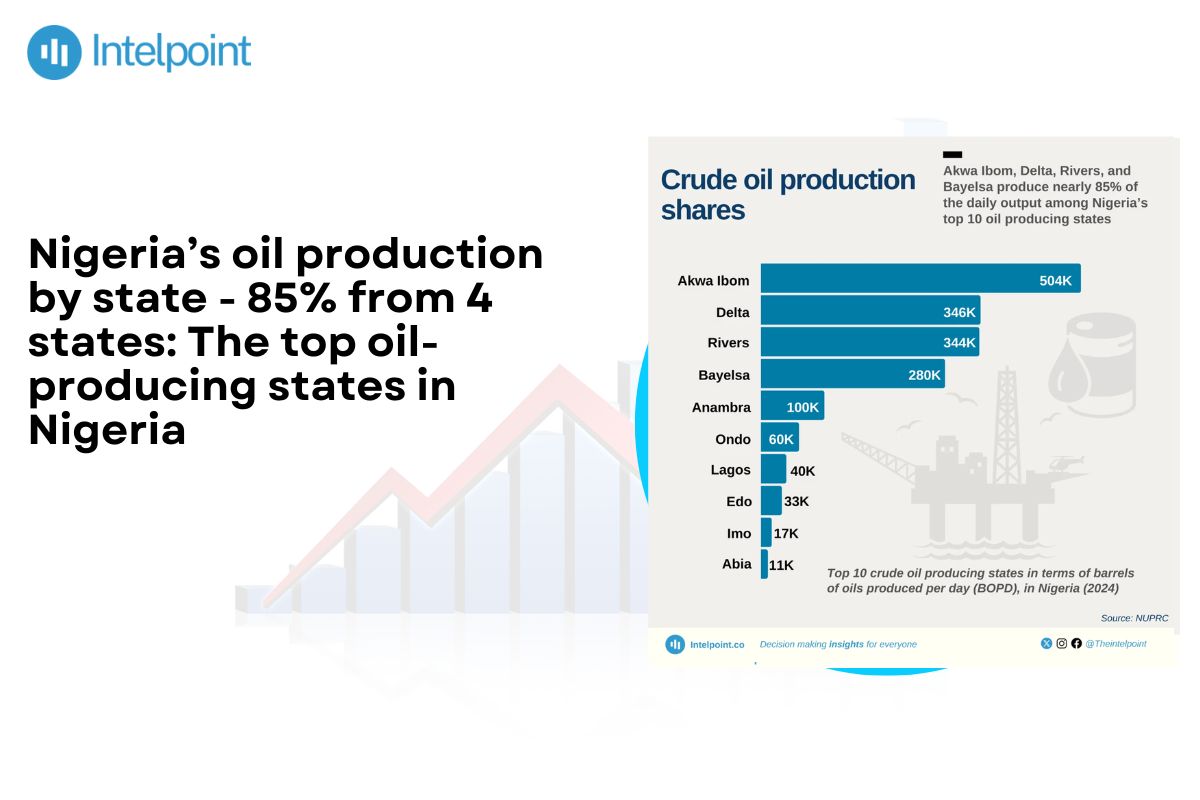Nigeria's education system is characterised by extreme inequality. The country’s literacy level has wavered, reaching 69% in 2022, representing a slow improvement over the 15 years since 2007. Regional disparities are extreme, with states like Imo and Lagos reporting 96.43% and 96.3%, respectively, and states like Yobe and Zamfara reporting much less. A high percentage (73%) of youths between ages 15 and 24 are literate on some level, but only 7% have an IT skill level, resulting in a digital skill deficit.
Here’s a chart summarising the top 10 most educated tribes in Nigeria as of 2024:

Key takeaways
- 2000–2004: The Igbo and Yoruba led in literacy, while the Hausa and Fulani lagged. Nigeria's literacy rate in 2003 was 54.77%
- 2005–2009: The literacy rate rose to 70.20%. The rate of increase for the Edo and Tiv peoples was impressive, while that of the Fulani and Kanuri still lagged far behind.
- 2010–2014: Nigeria's literacy rate in 2010 was 68.11%. Igbo and Yoruba continued to lead, while Edo and Tiv showed improvements with targeted programmes, but Fulani and Kanuri remained disadvantaged.
- 2015–2019: By 2018, the Fulanis saw gains of about 35%, aided by government programmes directed at nomadic and rural populations.
- 2020–2024: Nigeria's literacy rate was 77.62% in 2021 but declined to 59.57% by 2024. The Igbo and Yoruba remained at the top, while the Fulani and Kanuri improved.
2000-2004: Foundation and challenges
Nigeria's literacy level in 2003 was 54.77%. Yoruba and Igbo communities continued to have high literacy levels through long-term access to schools and educational programmes. In 2003, male youth between 15 and 24 attained a 78.13% youth literacy level, and female youth in the same age group achieved a 60.51% youth literacy level.
Under universal basic education (UBE) programmes, school attendance increased from 18 million in 1999 to 25 million in 2002. However, regional inequality persisted, with lower access to schools and educational programmes in the northern regions and a lower literacy level.
2005-2009: Gradual improvements
Nigeria's literacy level rose to 70.20% in 2006, a 15.43% improvement over 2003. In 2008, it lowered to 51.08%, a 19.12% drop. Urban literacy over these years averaged approximately 69.4%, with rural areas having relatively low values of roughly 38.5% and urban-rural gaps recurring in most areas.
2010-2014: Accelerated growth
In 2010, Nigeria's level of literacy stood at 68.11%. The national youth literacy level in English was 76.3%, with males at 81.0% and females at 71.4%. Youth literacy was 85.6% in any language, with males at 89.4% and females at 81.6%.
The literacy level in the English language for adults was 57.9%, with males at 65.1%, females at 50.6%, and 71.6% in any language, with males at 79.3% and females at 63.7%. Yoruba and Igbo groups continued to dominate in education, and gaps between regions persisted, with southern areas having a relatively high literacy level compared with areas in the north.
2015-2019: Continued progress
Nigeria's literacy level continued to rise between 2015 and 2019. In 2018, it reached 62.02%, an improvement of 10.94% over 2008. Urban male and female literacy rates were 86.4% and 74%, respectively, and rural male and female literacy rates were 59.5% and 35.4%, respectively.
Yoruba and Igbo continued to dominate in educational accomplishment, with southern Nigeria having a higher literacy level than northern regions. In 2019, 49% of admissions to courses for adults and basic literacy included females.
2020-2024: Ongoing developments
Between 2020 and 2024, Nigeria's literacy trends fluctuated. In 2021, its national literacy level rose to 77.62%, a 13.9% rise over 2010. In 2024, it fell to 59.57%. Yoruba and Igbo groups showed high literacy, with Igbo and Yoruba youths having a 74.2% and 70.3% youth literacy level, respectively, for 15-24 years of age. Despite such achievements, Nigeria faced educational access and maintenance issues, with significant regional inequality.
Conclusion
Nigeria's most educated tribes, such as the Igbo and Yoruba, have long been at the top regarding educational achievement. Igbo and Edo tribes have youth literacy at 74.2%, and Yoruba have 70.3% youth literacy at ages 15-242. Igbo and Edo tribes have a strong educational heritage and have played an important role in Nigeria's academic development. Other tribes, such as Ibibio and Tiv, also have high literacy levels, with 68.4% for Tiv.
FAQs
Which region is the most educated in Nigeria?
The Southern regions of Nigeria are more literate than the other regions. The South West has the highest number of literate people in Nigeria, with 89% of males and 80.6% of females being literate.
Which is the most successful tribe in Nigeria?
The Igbo tribe is often considered the most successful in Nigeria because of the entrepreneurial spirit and significant contributions the people have made to the higher productivity modes.




